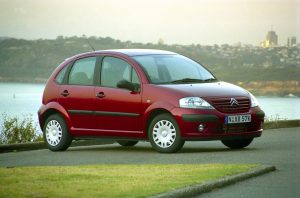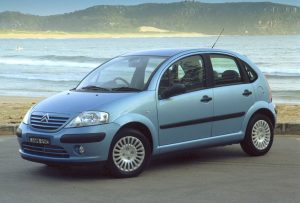Recalls: Citroen Mk.1 C3
Overview
Manufacturers, or importers, issue recalls for defects or faults which have the potential to cause injury. Generally, manufacturers will inform the original buyers if their vehicle is subject to a recall and of the steps required to remedy the defect or fault. Please note that the recalls below (if any) are for Australian-delivered vehicles only. Furthermore, the number of recalls should not be taken as an indication of a model’s reliability or its safety more generally.
Recalls: Citroen Mk.1 C3
- In March 2003, a recall was issued for Citroen Mk.1 C3 vehicles due to a condition in which water could enter the ABS hydraulic block computer connector, disarming the ABS and causing the ABS warning light to illuminate (PRA 2003/6032).
- In April 2006, a recall was issued for Citroen Mk.1 C3 vehicles to replace the accelerator pedals (PRA 2006/8447).
- In January 2007, a recall was issued for Citroen Mk.1 C3 vehicles due to the ABC ECU potentially being out of conformity with the manufacturer’s specifications when battery voltage was abnormally low; this could result in a reduction in braking efficiency (PRA 2007/8974).
- In October 2008, a recall was issued for Citroen Mk.1 C3 vehicles so that the suspension arm nuts could be re-tightened (PRA 2008/10409).
- In January 2009, a recall was issued for Citroen Mk.1 C3 vehicles due to vehicles being fitted with a non-conforming engine relay unit (PRA 2009/10557).
- In October 2009, a recall was issued for Citroen Mk.1 C3 vehicles due to the position of the lighting control ring being incorrectly detected by the lighting management system. As a result, the lamps could go out without being turned off by the driver (PRA 2009/11150). This recall was re-issued in October 2010 (PRA 2010/12024).
- In August 2011, a recall was issued for Citroen C3 vehicles fitted with the 1.6-litre turbo-diesel engine. In these vehicles, the fixing bracket of the air unit on the engine could break under the effect of vibrations, affecting surrounding components on the engine. For the VINs of the recalled vehicles, please see PRA 2011/12786.
Problems and faults: Citroen Mk.1 C3
Overview
This section identifies potential problems, causes and fixes based on the experiences of owners and repairers, online sources and technical service bulletins. This information is provided solely for reference purposes and AustralianCar.Reviews recommends that only properly qualified persons carry out repairs or modifications. Furthermore, the number of items below should not be taken as an indicator of a model’s reliability or the frequency with which they may occur.
To report a problem or fault to the AustralianCar.Reviews team, please use the Contact Us form. Note that AustralianCar.Reviews does not offer advice on automotive problems or disputes; such enquiries will not receive a reply. For vehicles purchased from dealers after 1 January 2011, please see our Australian Consumer Law fact sheet.
Problems and faults: Citroen Mk.1 C3
- For early Citroen Mk.1 C3 models with 1.6-litre turbo-diesel engines, the high pressure fuel-injection pump was susceptible to failure. The pump was subsequently redesigned, but vehicles fitted with replacement pumps as per the original are still susceptible to failure.
- For Citroen Mk.1 C3 models with the 1.6-litre turbo-diesel engine,
- the electric power steering pump and the brake vacuum pump are susceptible to failure – these items can interfere with the Multiplex wiring and affect other components; and,
- the end of the plastic dipstick could break and drop into the sump, requiring the sump to be removed in order to retrieve it.
- Problems with the radio may foreshadow electrical problems with the controller area network (CAN) bus ‘Multiplex’ wiring.
- For the 1.4-litre petrol engine, the water pump bearing could fail, dislodge the timing belt and cause serious damage to the engine.




